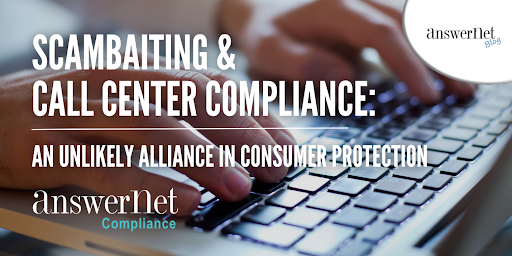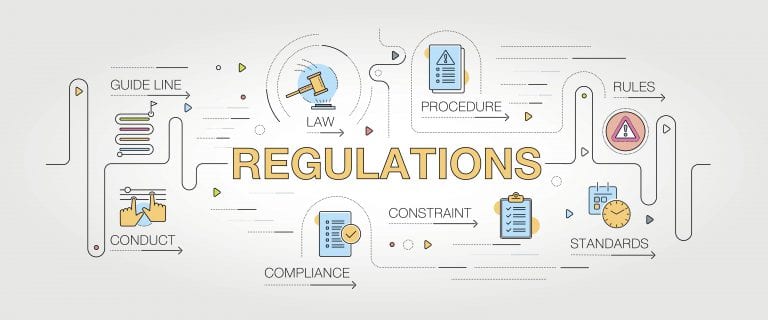After countless hours of planning, preparation, and implementation, you finally have the new telemarketing program kicked off. It seems to be running smoothly and more importantly, client goals and expectations are being met.
You have a great operations team in place to keep a close eye on KPIs and make adjustments as needed to continue to reach and exceed client goals. But does the work stop there? Absolutely not. Henry Ford once said:
“The competitor to be feared is one who never bothers about you at all, but goes on making his own business better all the time.”
Even though the new telemarketing program is running smoothly and considered a success, we should always look for ways to improve on the program.
How to Continuously Improve?
Each program assessment or evaluation should start with a specific objective in mind. The objective could be very focused, such as trying to figure out why the contacts per hour (CPH) is low, for example.
Or the goals can be very broad, such as assessing all aspects of the telemarketing program to look for possible efficiencies or automation that could be implemented. Knowing the objective in the beginning guides the rest of the assessment.
After understanding the objectives or goals of the assessment, it is time to dive into the program. This is done in many ways, depending on the type of program.
Assess the Program
Here is a list of ways to start to dissect the program:
- Conduct interviews with stakeholders (including the executive team, clients if this is an outsourced telemarketing program, and vendors) and those on the operations team (including managers, supervisors, agents, and the IT/dialer team). Come prepared with specific questions that you can ask in order to better understand the program and how it currently is running. This is also a great way to learn about pain points or areas that could be improved. Providing these questions to the other party ahead of time helps them to understand the objectives and come to the interview/meeting better prepared.
- Ask managers and supervisors to provide scripts, training material, and several recorded calls. If there are multiple campaigns involved, make sure there are recordings from each campaign. Listen to the recorded calls to get a better understanding of how the scripts are being used. This also gives you a good idea if the script is laid out well for the telemarketing agents.
- Ask the IT/dialer team for a copy of each report being generated and review them. Look for trends in the data. It’s also important to focus on those KPIs that are the objective of this assessment.
- Gain deeper understanding of any processes that are happening outside of the dialer. Are there spreadsheets being used for tracking or reporting? Are there processes that could possibly be automated?
Evaluate Your Findings
After sufficient time has been spent gathering and analyzing all the information, it is time to write up a report of the findings and possible solutions.
Prioritize the findings by importance and/or ROI. This helps the stakeholders (whether internal or external) to see the results in an organized way and help them to make decisions on which items to focus additional hours and resources.
Once decisions are made, it is time to roll up the sleeves and get the work done. Work with appropriate team members needed to make changes or implement new processes. Ensure proper testing and training is given if new processes or applications are being used.
The last step, which should never be forgotten, is to evaluate the process. There are two main reasons to do this.
- Track to see if changes that were agreed upon by the stakeholders are having the desired effect. This may take a few months depending on the changes made. If the desired effect was not achieved, either further adjustments need to be made or a different direction needs to be taken.
- Evaluate the overall process used for the assessment and make any adjustments needed for the next program assessment. If a specific form or list of interview questions was very useful, why discard it and have to rewrite them again next time? Keep those important documents with adjustments for the future.
Seek an Outside Opinion
At Quality Contact Solutions, we found that having someone from “the outside” assess the program is the most effective way. By outside, it doesn’t mean that it needs to be someone from outside the company. It could be someone from another part of the company who doesn’t work on the program on a daily basis.
This person or team will be able to look at the program with a fresh set of eyes and be objective in the evaluation of the telemarketing program. It is important that the company has a culture of continual improvement.
When this person or team begins to learn and evaluate a program, it is vital that all employees are willing to be apart of the process and not concerned with how the results of the assessment will affect their jobs.
Benefits of Continual Improvement
I know what you are thinking. Wow, this appears to be a lot of effort that I am not sure if my company is willing to invest in. I have been evaluating telemarketing programs in my current role for more than four years, and I have seen some very positive outcomes to continual program assessments.
- Improved employee satisfaction and morale: If you think about how an assessment is viewed by a front line agent making telemarketing calls, if done correctly, an assessment can be very positive. Hopefully, the culture within every telemarketing services company is to listen to their employees and take their suggestions into consideration. Now, let’s take that a step further. Bringing someone from outside of the team to come in and ask about those aspects that they like or don’t like or what they think could be better will have a positive effect on the employees and team. Many times, ideas that were told to a supervisor may not have made it far enough up the chain. With this approach, different ideas come up during the interview since the person is coming from the outside and the new perspective sparks new ideas. Possibly seeing those ideas become a reality can be a real morale booster.
- Decreased costs and/or increased sales: If done properly, a program assessment should show areas that could be improved. It could be as simple as an adjustment to a script, or as complex as using a different dialer or application for certain processes. In one evaluation that I completed, I found that one call center we used was very good at a specific campaign but very inefficient at a different type of campaign. By reallocating campaign lists, we were able to see an increase in sales by 36% for one campaign and 10-15% on all other campaigns.
- New markets/opportunities: It is possible through this process to find different markets or opportunities for additional hours. During one evaluation, I found that we were not dialing wireless numbers. We had just set up a call center that had a great Non-ATDS solution so we knew we could handle those calls. We presented our findings to the client and were able to do a trial run on wireless dialing. The trial was such a huge success that currently about 35-40% of our dialing for this particular program is now wireless numbers.
- Increased relationship with the client: Telling a client that is completely happy with the work we are doing that we will be doing an assessment to try and improve even more really impresses them. We are showing that not only do we care about meeting their goals and expectations, but we want to exceed those expectations through improvement. Many times, clients have given us extra work based on this approach. I completed one evaluation with a client where there were not a ton of changes that could be made to make the program much more efficient. We made a few, which reflected in a small increase in sales, but not what I was hoping for. A few months later, the company came to us with additional business. They were so impressed by our culture of continual improvement that they trusted our work and that we would do our very best.
The moment we decide not to focus energy on improvement will be the time when another person or company will come along that can do the same job we can, but better.
Program assessments allow us to evaluate the program and look for ways to make it more efficient. Not only will the assessment improve the KPIs for the program, it will also strengthen the morale within the company and set it apart from the rest.
If you have any questions or comments, please reach out to me at rich.hamilton@qualitycontactsolutions.com or call me at 516-656-5105.
Other Articles You Might Find Interesting:
5 Telemarketing Misconceptions & Why They Aren’t True
8 Key Metrics Telemarketing Companies Need To Evaluate Performance
Telemarketing Laws: The Good, Bad, and Ugly
Rich Hamilton is the Vice President of Compliance and Administrative Services for Quality Contact Solutions. As a Customer Engagement Compliance Professional (CECP), Rich oversees the QCS telemarketing compliance consulting practice, which conducts compliance assessments, reviews, and audits for companies that require outside professional assistance. He also advises the QCS management team on telemarketing compliance matters on an as-needed basis. Rich also manages accounting, human resources, and the administrative staff, ensuring all team members are aligned to support the QCS team as they work toward achieving client goals. Rich is also the creative powerhouse behind many special projects and initiatives throughout the organization. He can be reached at rich.hamilton@qualitycontactsolutions.com or 516-656-5105.









